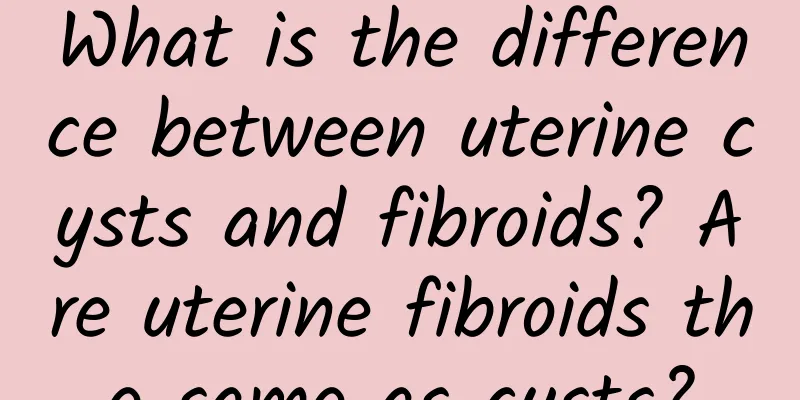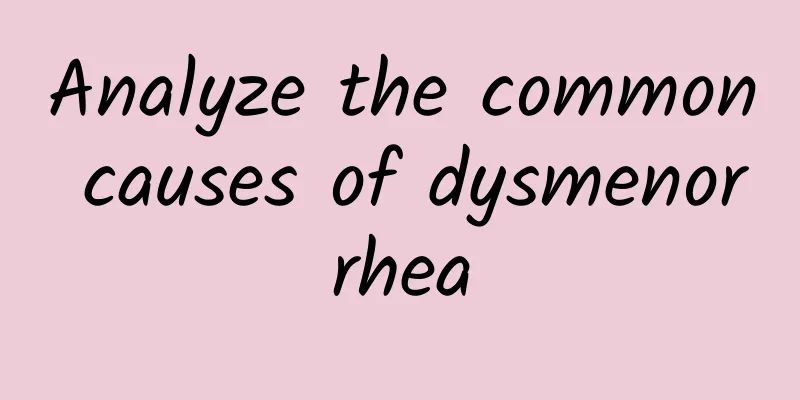What is the difference between uterine cysts and fibroids? Are uterine fibroids the same as cysts?

|
What is the difference between uterine cysts and fibroids? Are uterine fibroids the same as cysts? Among the common gynecological diseases, uterine cysts and fibroids are two common problems. Although both problems are related to the uterus, they are actually different. This article will discuss the differences between uterine cysts and fibroids in detail. 1. Different types: Uterine fibroids, also known as adenomyosis, refer to endometriosis lesions that can produce glandular lesions and myopathies in other structures in or around the uterus. Uterine fibroids are just lumps in the uterine muscle layer and are benign tumors. 2. Different symptoms: Symptoms of uterine cysts are usually irregular menstruation, pelvic pain, infertility, etc. Due to the presence of glandular lesions and myopathy, endometriosis and difficulty in embryo implantation may occur. Uterine fibroids usually present with menorrhagia, prolonged menstruation, menstrual pain, etc., but most patients do not have obvious symptoms. 3. Different impacts: Uterine cysts may bring physical and psychological burdens to patients. For women who are eager to get pregnant, it may lead to infertility and even an increased risk of ectopic pregnancy. Uterine fibroids usually do not hinder conception unless the location and size of the fibroids significantly hinder embryo implantation and uterine expansion. If the fibroids are large, they can compress the bladder and rectum, causing difficulty in urination and defecation. 4. Different palpation: In gynecological examination, uterine cysts may cause abnormal sensations of cystic enlargement and increase of the uterus. However, uterine fibroids can be clearly observed as thickening of the uterine wall and round or oval mass in B-ultrasound examination. 5. Different causes: At present, the cause of uterine cysts is still unclear. Some studies believe that it is related to genetic factors, immune abnormalities and endocrine disorders. Uterine fibroids are related to the increase of female estrogen levels and usually improve after menopause. There are obvious differences between uterine cysts and fibroids in terms of type, symptoms, effects, palpation and causes. Although both are common gynecological diseases, they require targeted treatment. If you suspect that you have uterine cysts or fibroids, be sure to see a doctor in time and receive a doctor's examination and advice. |
>>: What are the effects of a 2mm uterine fibroid? Do 2mm uterine fibroids need to be treated?
Recommend
Experts analyze the common causes of cervical hypertrophy for you
As people conduct in-depth research on gynecologi...
International Health Department adopts 16-word principle for ractopamine standards
The Codex Alimentarius Commission (CAC), jointly ...
Experts tell about the causes of cervical hypertrophy
Cervical hypertrophy is a common type of chronic ...
To avoid risks when reheating New Year dishes, heat them above "this temperature"! "Five Do's and Two Don'ts" to Prevent Food Poisoning
Have a healthy new year, starting with food safet...
What are the causes of cervical hypertrophy?
What are the causes of cervical hypertrophy? Cerv...
Pelvic inflammatory disease is more likely to occur in winter. How can we prevent it?
When winter comes, when faced with a choice betwe...
A brief introduction to the clinical manifestations of senile vaginitis
Senile vaginitis is a type of vaginitis. There ar...
What to eat to treat ovulation bleeding
What to eat to treat ovulation bleeding? Nowadays...
What are the precautions for patients with ovarian tumors?
What precautions should patients with ovarian tum...
After exercise, you can take in protein to lose weight without gaining weight
Weight loss is an undefeated topic, but it is als...
Can women with cervical erosion eat red dates? 6 things to note about cervical erosion
Cervical erosion is very common among women and i...
Korean actress loses weight by eating only protein, doctor says beware of cholecystitis
According to media reports, when the South Korean...
What should I pay attention to when having adenomyosis?
Adenomyosis is also called "benign cancer&qu...
Thin waist! Wearing the vest for 3 years, the waistline is only 16 inches
Vests can help women sculpt their bodies and crea...
What if my menstrual period becomes darker?
What if my menstrual period becomes darker? Darke...









